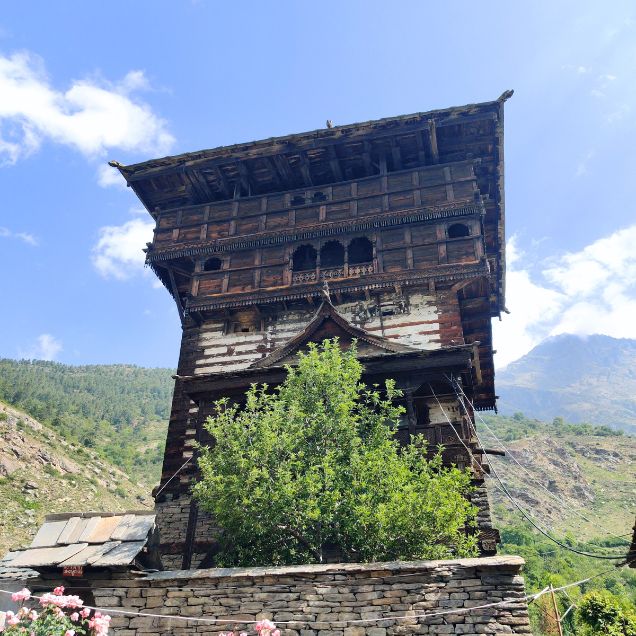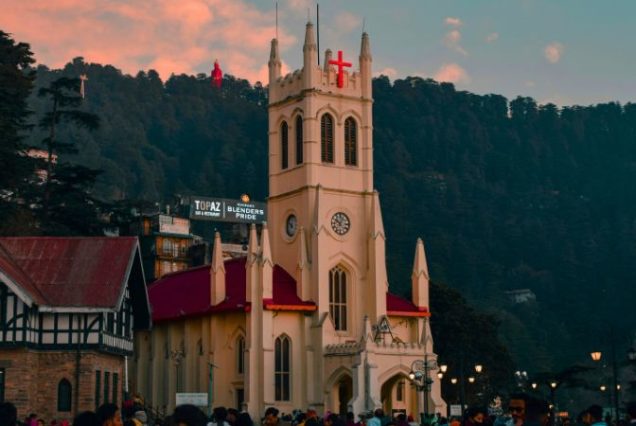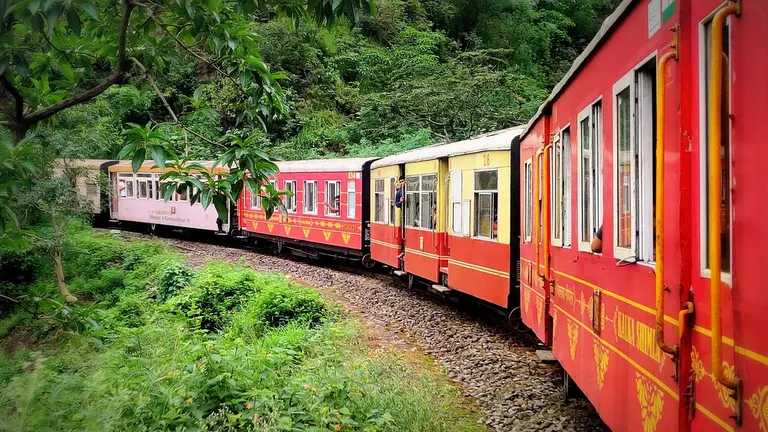Sangla Valley
Sangla is situated beside the river Baspa Valley; that’s why it’s known by the name Sangla Valley. It is located in the Kinnaur district of Himachal Pradesh. It is one of the offbeat destinations in Himachal Pradesh. The Sangla Valley is covered with the high hills of the Himalayas, thick oak and pine forests, majestic glacier streams, and pristine river flow. This valley is home to a community of Tibetan people. This destination is the perfect place for nature lovers who can enjoy the peace of this pristine environment.
The top tourist destination in the Sangla valley is Kamru Fort, which is dedicated to the Hindu goddess Kamakshi. The fort was converted into a temple—an architectural marvel and an artistic delight. You can also visit a place near the Sangla Valley, the Bering Nag Temple. It is a popular tourist attraction and a significant place as a religious attraction. While visiting Sangla Valley, you can also go fishing and camping near the Baspa River.
This place also serves a great number of apple and apricot orchards. It is also an important apple-growing region in Himachal Pradesh. You can feast on the juicy red apples of this region and experience the delicious explosion of their rich flavors. In Sangla, you gain experience of the local customs, traditions, and lifestyles of the Tibetan and Hindu people in Himachal Pradesh. You can also taste Sangla Valley foods like thukpa, thupka and momos, as well as simple dal, rice, sabzi, and roti.
Tour details
- Best time to visit March, April, May & June
- Ideal Duration from Delhi 3-4 Days
- Minimum Budget INR 5000
- Website https://www.realhimachal.in/
Best Places To Visit In Sangla Himachal Pradesh
Sangla Meadows, also known as Sangla Kanda, is a very popular attraction near Sangla. It is known for its natural beauty and snow-covered mountain ranges.
Baspa River rises near the Indo-Chinese border and forms the Baspa Valley, or Sangla Valley. It is one of the most scenic in Chitkul Village.
The ever-stunning Kamru Fort stands at an altitude of 2600 meters above sea level and is only 2 km from the beautiful Sangla Valley.
Mathi Temple is dedicated to the goddess of the people of Kinnaur. It is the oldest temple in the temple complex, and it was built around 500 years ago.
Chitkul is a small village in the Himalayas with snow-clad mountains around it. One side of the terrain is dotted with a few wooden houses and apple orchards.
A beautiful village that looks just like something out of a cartoon movie, in which you see the beginning of all stories. Rakchham is a Sanskrit word, and the first part of the word ‘Rak’ means rock and ‘chham’ means bridge. Earlier, there used to be many bridges made from stones, hence the name.
The Kagyupa temple has a highly valued old image of the Shakyamuni Buddha, a Wheel of Life mandala, and four Directional Kings on either side of the door.
Its beautiful Hindu Devta Shree Badri Vishal Ji Temple, Kamroo, is at the center of the village.
It was established in 1992 to perform the Kalachakra ceremony by the Mahabodhi Society. It is one of the major attractions in the area, attracting a large number of tourists.
This beautiful temple is dedicated to Lord Jagas, also known as Lord Shiva, whom the local people worship for the well-being of the village and its inhabitants.
The Tibetan Wood Carving Center is one of the most famous attractions in Sangla and offers amazing items made out of wood carvings in Tibetan style.
Batseri is a village in Kalpa Tehsil of Kinnaur District in Himachal Pradesh and is known for its picturesque surroundings and amazing landscapes.
Hindustan Ka Akhri Dhaba is the last Indian restaurant in Chitkul. Make sure to have a great food experience.
The Trout Farm of Sangla was set up by the Himachal Pradesh fisheries department to protect and raise trout.
It is the entry gate to the beautiful valley of Tukpa.
Here Are Some of the Most Popular Sangla Valley Tour Packages
Trekking In Sangla Valley
The Best Hotels in Sangla Valley
How To Reach Sangla Valley
Via Air
Two airports exist that can enable travellers to go at least halfway between Delhi and Sangla Valley. The closest one is in Shimla, and the other is at Kullu, close to Manali. From Shimla or Kullu, take a bus or a private taxi to complete the remaining distance. There is also a different flying route that can be used because Rampur has a helipad, but doing so might put more strain on your finances. For anyone with limited time who would still like to see the amazing and uncharted Kinnaur in Himachal Pradesh, I would recommend flying as the best mode of transportation to get to Sangla Valley from Delhi.
Via Train
There aren't any direct trains available to Sangla Valley, which is 8,530 feet above sea level and still under development, so this is a sad fact. However, there is still some distance that may be covered by train from Delhi to Sangla Valley. From New Delhi, there are numerous trains that stop at interchanges on their way to Shimla. The train ride takes about 6 hours to get from Delhi to Kalka, which serves as a hub. There is a toy train that runs between Kalka and Shimla; it travels at an average speed of 18 km/h, so it will take about 5 hours to reach Shimla. After arriving in Shimla, you have the option of taking a bus or reserving a private vehicle to get you to Sangla Valley. Although cars are the best option, if I had to choose a comfortable way to go to Sangla Valley with the benefit of stunning vistas,.
Via Road
When someone asks me the best method to get to Sangla Valley from Delhi, I always say that driving is one of the options. Despite Google's claims to the contrary, the road trip from Delhi takes about 16 hours. Delhi, Chandigarh, Shimla, Kufri, Narkanda, Rampur, Karcham, and Sangla are all stops along the route. Another possible route may be to substitute Manali for Shimla, although doing so would present its own set of challenges because Rohtang Pass would be involved. The Manali-Sangla Valley route is not the best option if you want to go from Delhi to Sangla Valley in the winter because the Rohtang Pass is also closed during that time.
Best Time To Visit Sangla Valley
May to September is the best time to visit Sangla Valley because that is the time of year. You can enjoy the real colors of the fertility land of the Sangala Valley with the combination of blue skies. It is also a great time for the apple harvesting with enough safety and joy.
Summers in Sangla are short but definitely enjoyable; April to June is considered summer, but in reality it is really only May and June. The 40-kilometer road from Karcham to Chitkul is still open, so the entire Sangla Valley is accessible, as are all trek routes.
In general, monsoons are not thought to be the best times to visit the Himalayas because of the annual heavy rainfall that falls on the entire region surrounding Shimla, Kinnaur, and Manali; landslides caused by the constant rain become all too common during this time; road conditions deteriorate and occasionally it can rain nonstop, forcing you to stay indoors and ruining any sightseeing plans you may have; if you are planning to visit Sangla during monsoon, it would be best to first inquire about the weather forecast.
If you want to experience Sangla at its best, visit during the summer or monsoon. If you travel during the winter, though, be sure to pack warm clothes because the winters are very cold, with highs of 10 to -10 degrees Celsius.
F&Q’s Sangla Valley
Is Sangla worth visiting?
Sangla offers the quintessential Himachali experience. There is No Kinnaur trip is complete without visiting the two gems of Baspa Valley popularly known as Sangla and Chitkul. It is always the best decision of your life to spend at least a couple of days in Sangla Valley and around on your trip to Kinnaur Valley.
Which is better Sangla or Kalpa?
Sangla is the better if you are visit chitkul. You can cover kalpa during the day but visit and spend time at sangla make you feel much better.
What can I buy in Sangla?
You can buy some memorable stuff for the rest of your from the place sangla valley it is wood carving work and other handicrafts such as handmade shawls and caps.
Which river flows in Sangla Valley?
Baspa River rises near the Indo-Chinese border of India and forms the Baspa Valley (also known as the Sangla Valley) – one of the most beautiful in the Himalayas.
Our blog
Travel Tips and Advice
-
Yulla Kanda Trek 2025: An Enchanting Journey to the Highest Shri Krishna Temple
Read MoreThe trek to Yulla Kanda is located in Rora Valley in Himachal Pradesh’s Kinnaur district. It starts from Yulla Khas…
-
Kalka Shimla Toy Train ( Timing, Booking, Ticket Fees, Route, History)
Read MoreIt was constructed primarily during the British imperial days in India with an intention for rail road connectivity from the summer…
Other Links
Book amazing tours and exciting destinations with Real Himachal
Subscribe to get latest update & news
- © 2023 Real Himachal All Rights Reserved.

















